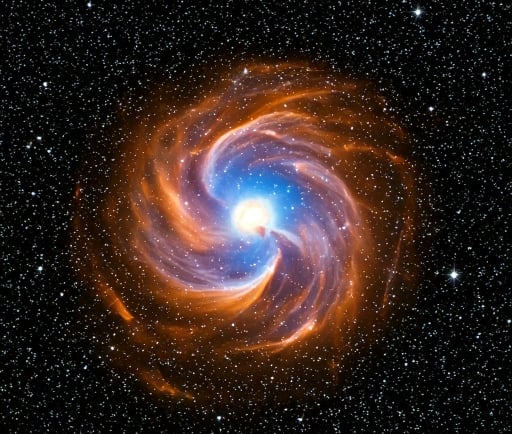IC 418: The Spirograph Nebula and its Spectacular Stars


Introduction to IC 418
The fascinating realm of astronomy often reveals extraordinary cosmic phenomena, and one such marvel is IC 418, also known as the Spirograph Nebula. Located in the constellation of Lepus, approximately 3,600 light years away from Earth, this planetary nebula captures the imagination of both amateur and professional astronomers alike. Its unique structure and the stellar bodies intertwined within it provide a rich subject for study and appreciation.
What Makes IC 418 Unique?
IC 418 is distinctive for its intricate, spiraled shape that resembles those created by a spirograph. This nebula is a result of mass loss from a dying star, which expels its outer layers and creates a stunning display of gases and dust. The nebula expands outward, illuminating its surroundings and forming bright knots of various elements that contribute to its captivating appearance. The complex structure and vibrant colors observed in IC 418 serve as a testament to the beauty and diversity of stellar evolution.
The Stars of IC 418: HD 35914
Among the stellar inhabitants of the Spirograph Nebula is HD 35914, a notable O-type star. O-type stars are characterized by their high temperatures and luminosities, emitting significant amounts of ultraviolet radiation. The presence of HD 35914 in IC 418 plays a crucial role in shaping the nebula's environment. As the star radiates energy, it ionizes the surrounding gas and dust, contributing to the nebula's luminous display.
The interaction between HD 35914 and the surrounding nebula also highlights the complex processes of stellar life cycles. As massive stars like HD 35914 evolve, they go through phases that can dramatically impact their environments. In this case, the star's energy helps to shape the intricate patterns within IC 418, confirming the dynamic nature of such cosmic structures.
Conclusion
IC 418, or the Spirograph Nebula, presents an exceptional opportunity for scientific inquiry and aesthetic appreciation. With its stunning visual characteristics and the presence of O-type stars like HD 35914, the nebula encapsulates a significant aspect of stellar evolution and the life cycle of stars. For astronomers and enthusiasts, observing IC 418 not only enhances our understanding of the universe but also inspires awe at the elegance of these distant cosmic phenomena. As we continue to unravel the complexities of our universe, nebulae such as IC 418 will undoubtedly remain at the forefront of astronomical exploration and curiosity.
